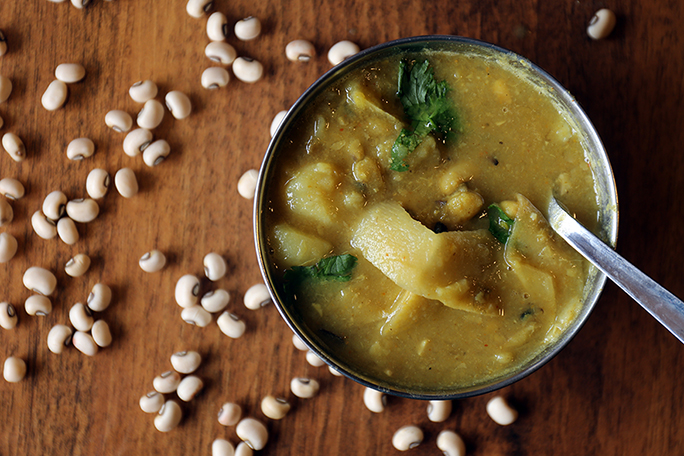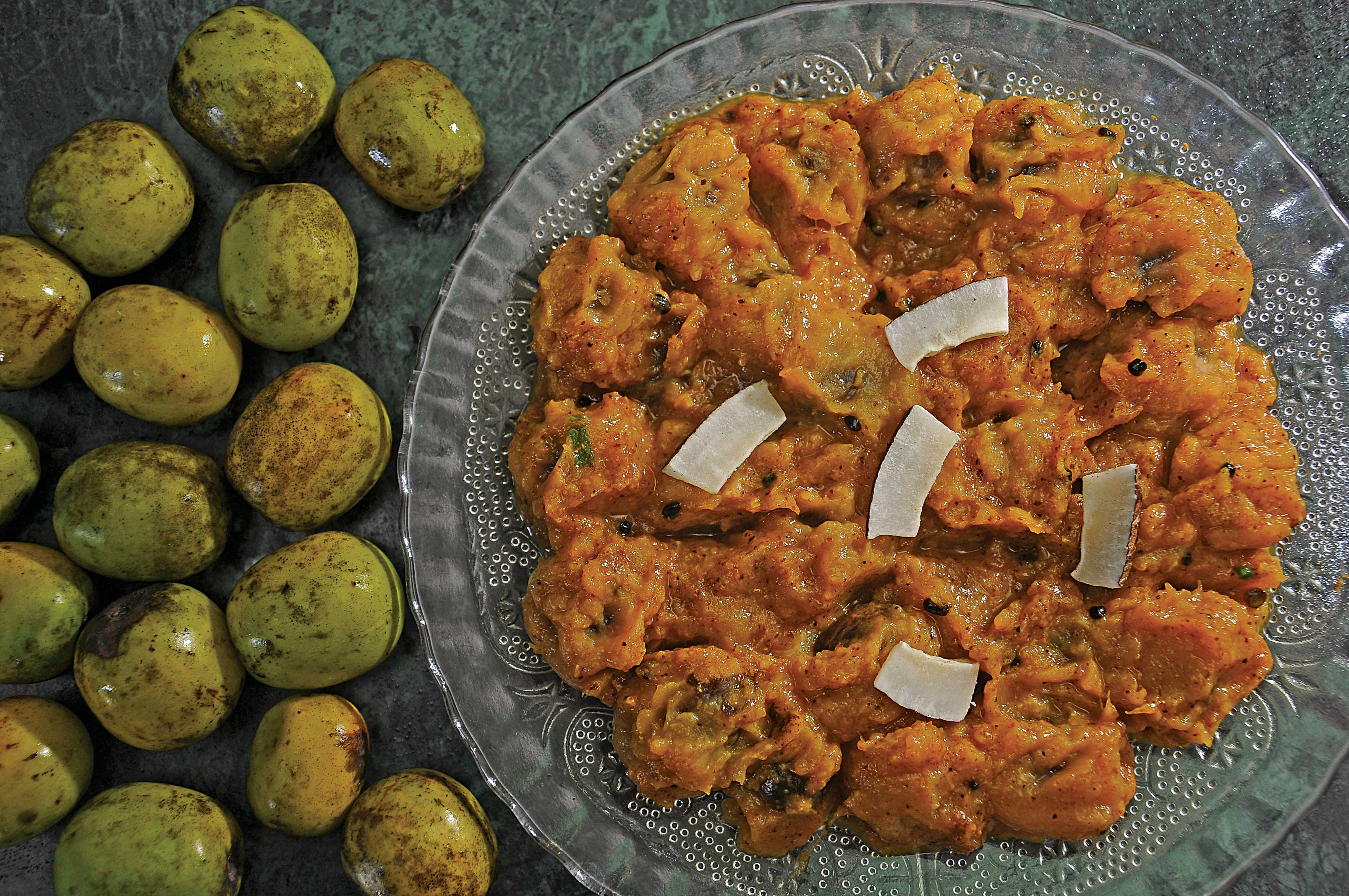
The first days of cold weather bring with them a craving for a favorite dish.
Just a few days ago, the weather finally started to change. It’s been hot for so much longer than it usually is that I was surprised and delighted when finally the chilly mornings and evenings showed up, even though long overdue. I’m a big fan of soup, but as summer rolls in and the heat becomes thick and unpleasant, soup becomes less enjoyable, and I regretfully have to put it aside for a time. Soup is tasty in pretty much any form: hot-and-sour, thenthuk, thukpa, even just a simple well-made mushroom or tomato soup—all of these are a sure way to my heart. But there’s one that I have a special love for, one that’s unique to Nepal, and that’s alu tama. So that’s what I wanted for lunch today. I know, of course, that it is often eaten as a curry, with rice, but as I first encountered it as a soup that is what I have always thought of it as.
I went to a place nearby. I’d never eaten there before, but they specialized in Newari and Nepali dishes, so I felt they’d be a good choice—and put in my order. What I was served was a tasty, delicious soup, but to me, sadly, it wasn’t alu tama. There just wasn’t enough tama. The fermented bamboo shoots are, to me, what gives this dish its unique zing and makes it so unlike anything else. It was also quite thin: too much broth and not enough substance.
However, it’s hard to say if it was authentic or not; there are so many ways to prepare a dish, and perhaps my tastes have been influenced by the incarnation of alu tama that I first fell in love with. Some years ago there was a small restaurant a short walk from my home. They served a hearty daal-bhaat, but the thing that I ordered most often was their alu tama. They served it in a small bowl, as a soup, and it was thick and spicy, with more chilies than in other versions I’ve had since. The dish itself is an acquired taste, of course. I know quite a few people—locals and foreigners both—who can’t stand the stuff. But, for some reason, it’s a perfect combination of ingredients for me: the mix of spices, potato chunks, bodi (black eyed peas) and the tangy fermented bamboo shoots; it all just works. Sadly, the restaurant has been closed for some time now, and while I have eaten it at several other places, and often enjoyed it, it’s just not been quite the same.
Back at the office, I told some of my colleagues about my disappointing lunch. “You can’t eat alu tama in a restaurant,” they shouted. “It’s only good made at home!”
Homemade is the best way to go, of course, if you know someone who excels at preparing it. Some friends of mine make a great version—not as spicy as the one I was telling you about, but just as delicious. They served it once when I was visiting them at dinnertime, and I enjoyed it so much they sent me home with a tub of leftovers, which did not last long in my house, I can tell you that.
But me? No, I’ve never been brave enough to make it for myself. My attempts at kwati, the nine-bean soup, were edible enough, but lacked that certain defining flavor the dish needs, and with alu tama being even more distinctive, I’ve not quite gotten up the courage. It might also have something to do with the bamboo shoots themselves, a pungent ingredient that I know can be easy to misjudge. I’ve been told it also makes a good achaar, but aside from that, it doesn’t seem to be used in many Nepali dishes—aside from the one we’re discussing, of course. If this is not correct, and there are other dishes out there prepared with tama that I am missing, I hope someone will set me straight me soon.
Once I did taste it in something else. I had been on a trip outside the valley, and when I returned home, one of my roommates had decided to make dinner for everyone. Different ones of us took turns cooking, and also purchasing ingredients that they enjoyed using. We sat down at the table; our friend had prepared a take on buff stroganoff, which is a sort of meat-in-a-white-sauce, served over rice. The food looked good, but smelled a little unusual. Hungry, we all filled our plates high, but after the first bite, we looked at the cook in horror. “What did you put in this?” we all cried. After a few more questions, we finally found out what had happened. Someone had bought a bag of tama some time previously—no one was quite sure when—and it had sat unnoticed in the back of the fridge ever since, gaining pungency as it did so.
Finding it that evening, our friend thought it was mushrooms and threw it into the mix. “But didn’t you taste it? Couldn’t you tell it was strangely flavored?” “I did think it tasted unusual,” he said. “But as you all know, I don’t like mushrooms, so I just thought that’s why I didn’t like the taste of it.” Well, I hate wasting food, but unfortunately the dinner that night was completely inedible; it’s possible that the tama was so old it had spoiled, equally likely that fermented bamboo shoots just don’t mix with a milk-based white sauce. I think we fried up a few eggs to put on our rice instead. Thinking back on that day might be another reason why I’ve been so hesitant to experiment with tama in my own kitchen.
Never mind. Winter is here, and with it lots of opportunities to try and find a new favorite place to eat one of my favorite dishes. And, hopefully, if they should happen to read this, I’ll get to enjoy it at some of my friends’ homes, too!










